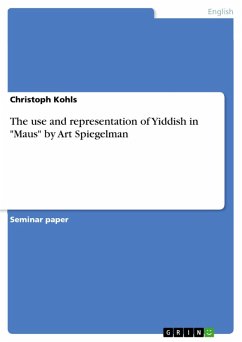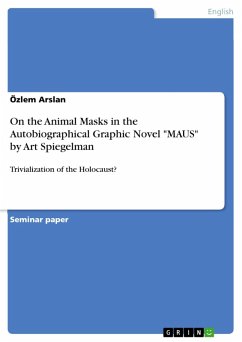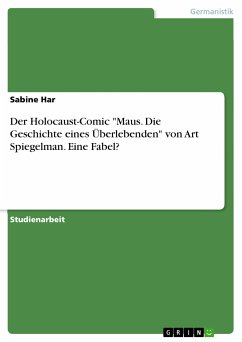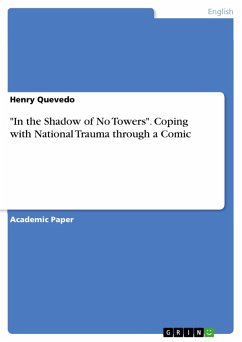Seminar paper from the year 2015 in the subject American Studies - Literature, grade: 2.3, Ruhr-University of Bochum (Historisches Institut), course: YIDDISCHKEIT: THE LITERARY AND POPULAR CULTURES OF YIDDISH SPEAKING JEWS, 1750-2000, language: English, abstract: In the 1930s, about 5,2 million Jews were able to speak Yiddish in Eastern Europe, but after the Second World War almost five million of them were dead. This led to a declining importance and use of the Yiddish language. But it is not a dead language but a language that gained interest of the descendants of the former yiddish-speaking Jews and research at the universities and gets more and more known. Furthermore, there are still speakers of Yiddish, mostly in the ultra-orthodox milieu in Israel. To show that Yiddish is still used, I will examine the graphic novel "Maus" by the American author Art Spiegelman whose parents immigrated to the USA in the early 1950s. It deals with the story of his jewish father in Poland during the Second World War. This paper shall deal with the use of Yiddish and Yinglish and its representation in the graphic novel. The aim of this paper is to show that traces of Yiddish can be found even in a graphic novel. Following that aim, chapter I.A deals with the immigration of Jews to the USA and the impact that the big jewish community in America had on the American language - the influence of Yiddish on English and the other way round. The second chapter (II.) focuses on the life of Jews in Poland and their use of Yiddish. The chapter shall give an overview of the social premises, the Jews lived in. Nevertheless it shall also give a short introduction of the Yiddish language and how it was used. As the graphic novel deals with the Holocaust, the third chapter (III.) sums up the events after the invasion of the German Reich to Poland and shows what the Germans did to Poland. Furthermore the important polish places for the graphic novel are introduced. The next chapter introduces Art Spiegelman and gives a short biography of him. Furthermore his work "Maus" will be represented and a short summary of the graphic novel focusing on the storyline in the 1930s and 1940s will be given. Chapter V. now analyzes the use and representation of Yiddish and in the last Chapter a conclusion will be drawn towards the question, how Yiddish is represented in "Maus".
Dieser Download kann aus rechtlichen Gründen nur mit Rechnungsadresse in A, B, BG, CY, CZ, D, DK, EW, E, FIN, F, GR, HR, H, IRL, I, LT, L, LR, M, NL, PL, P, R, S, SLO, SK ausgeliefert werden.









